Welcoming a dog into your home brings immense joy, but for many, concerns about shedding and potential allergies can make the decision-making process challenging. The good news is that numerous delightful dog breeds are known for their minimal shedding, offering a cleaner home environment and often, a more comfortable experience for individuals with sensitivities. This comprehensive guide delves into dog breeds that don’t shed hair, exploring why they’re often a preferred choice and what you need to know about caring for them. Whether you’re an allergy sufferer or simply prefer less fur around the house, understanding these unique breeds is the first step toward finding your perfect canine companion.
Understanding Shedding and Allergies: The Link to Dog Breeds That Don’t Shed Hair
It’s a common misconception that dog allergies are caused by hair itself. In reality, allergens are primarily found in a dog’s dander (dead skin cells), saliva, and urine. These microscopic particles often cling to dog hair and are then dispersed into the environment as dogs shed. Therefore, dogs that shed less hair tend to release fewer allergens into the air, making them a more suitable option for people with allergies.
While the term “hypoallergenic dog” is widely used, it’s important to understand that no dog is 100% allergen-free. Even breeds considered hypoallergenic or those that don’t shed hair still produce dander and saliva. However, their unique coat types often trap dander and hair, preventing it from becoming airborne. This significantly reduces the concentration of allergens in a home, thereby minimizing allergic reactions for many individuals. Choosing a tiny breed dog that doesn’t shed can be particularly beneficial for smaller living spaces where allergen concentration might otherwise be higher. Understanding this distinction is key to making an informed decision when selecting a dog breed that doesn’t shed hair.
Top Dog Breeds That Don’t Shed Hair (or Shed Very Little)
If you’re looking for a companion that keeps shedding to a minimum, these breeds are excellent contenders. Each offers unique characteristics and grooming needs, making them special in their own right.
1. Poodle
Poodles are renowned for their intelligence and their distinctive curly, low-shedding coats. Available in three sizes—Standard, Miniature, and Toy—there’s a Poodle for almost any lifestyle. Their dense, curly hair traps loose fur and dander, rather than releasing it into the environment. This makes them one of the most popular choices among dog breeds that don’t shed hair. However, their beautiful coats require regular grooming, including brushing several times a week and professional clipping every 4-6 weeks, to prevent matting. Poodles can be incredibly versatile, and you might even find variations like red teacup Poodles or black teacup Poodles for those seeking a smaller, uniquely colored companion. Some Poodles even possess a charming “teddy bear” appearance, making them even more appealing to certain owners.
 White Poodle walking through lush green grass on a sunny day
White Poodle walking through lush green grass on a sunny day
2. Yorkshire Terrier
These charming and spirited small dogs boast a silky, fine coat that resembles human hair, meaning they shed very little. Yorkies are adaptable and can thrive in various living environments, provided they receive ample attention and love from their families. Their long, flowing hair requires daily brushing to prevent tangles and mats. Regular trims are also recommended to keep their coat manageable and stylish. Many owners are drawn to the idea of finding small Yorkie puppies due to their undeniable cuteness and low-shedding qualities.
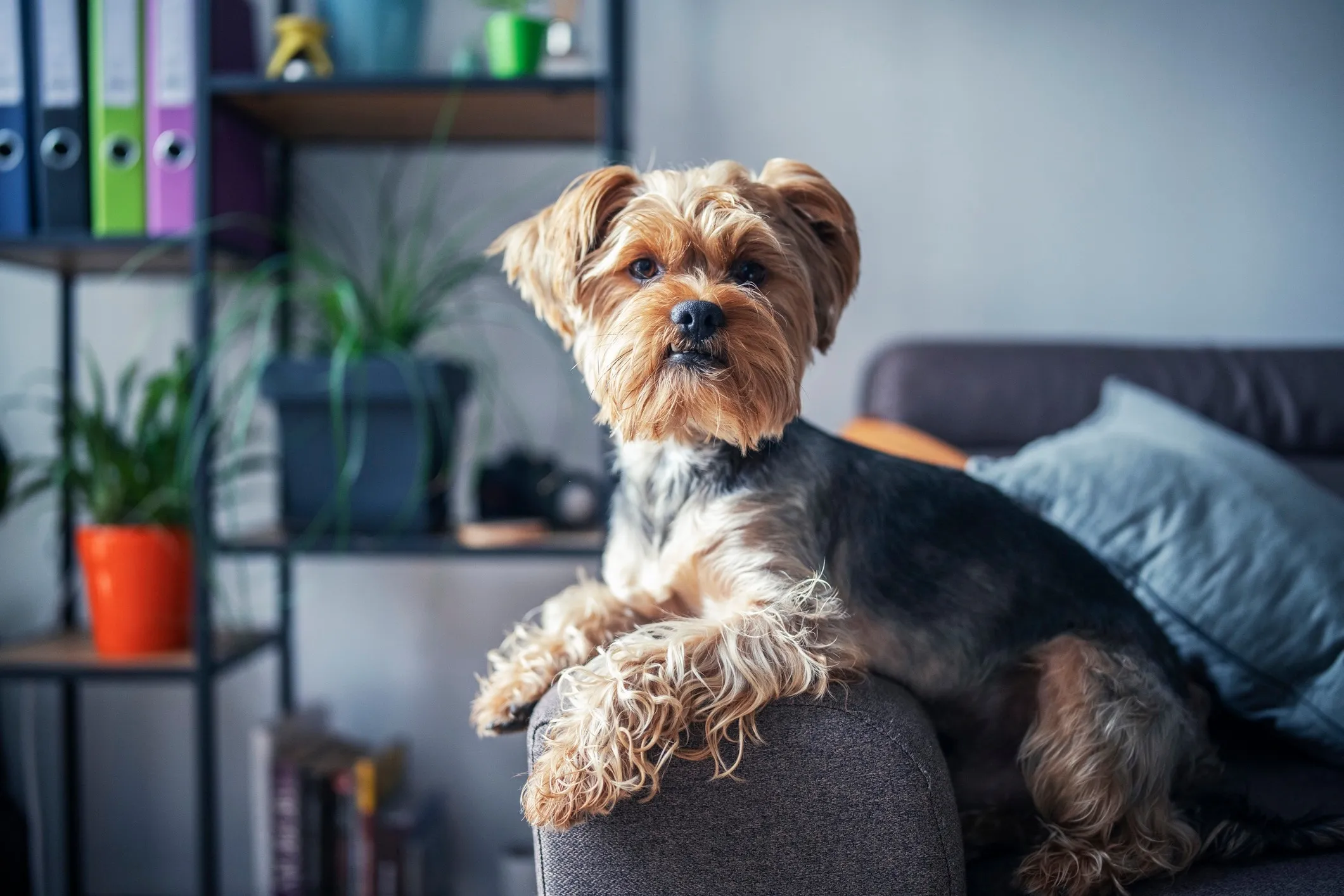 Blue and tan Yorkshire Terrier lounging comfortably on an armchair in a cozy room
Blue and tan Yorkshire Terrier lounging comfortably on an armchair in a cozy room
3. Shih Tzu
The Shih Tzu is an ancient companion breed celebrated for its luxurious, flowing double coat that sheds minimally. Despite their abundant hair, Shih Tzus are considered a good choice for those seeking a dog breed that doesn’t shed hair. Their friendly and outgoing temperament makes them excellent family pets. Due to their long coat, daily brushing is essential to prevent tangles and matting. Owners often opt for a “puppy cut” to simplify grooming. It’s also worth noting that their flat faces can predispose them to certain health issues like overheating and breathing difficulties, which owners should be mindful of.
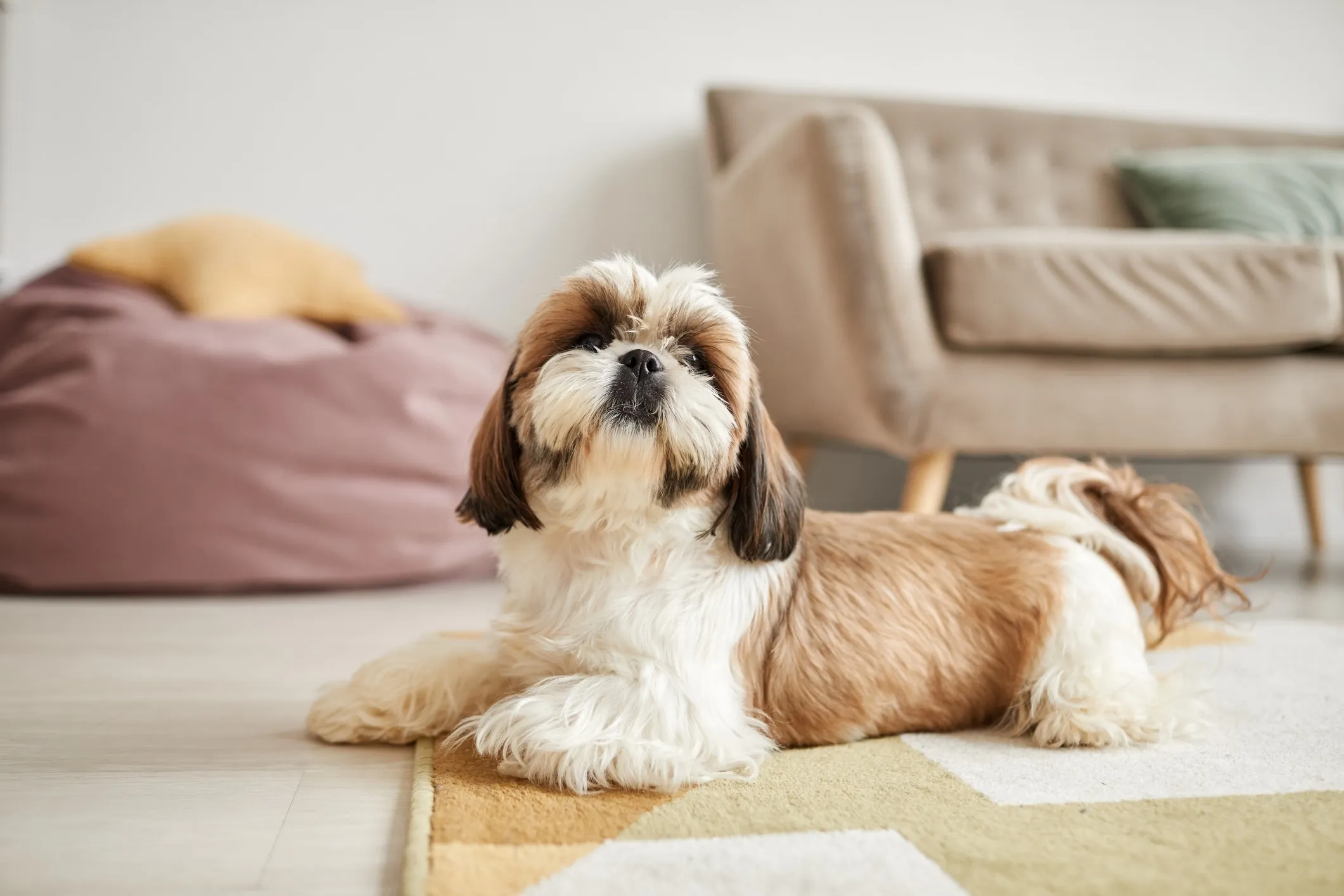 Brown and white Shih Tzu lying peacefully on a living room floor next to a cozy rug
Brown and white Shih Tzu lying peacefully on a living room floor next to a cozy rug
4. Miniature Schnauzer
Miniature Schnauzers are sturdy, intelligent dogs with a wiry topcoat and a soft undercoat. They are low-shedding, making them a popular choice for many households. These energetic dogs require at least an hour of exercise daily and thrive on mental stimulation. Their distinctive coat needs regular stripping or clipping to maintain its texture and minimize shedding. Brushing a few times a week is also necessary to prevent mats.
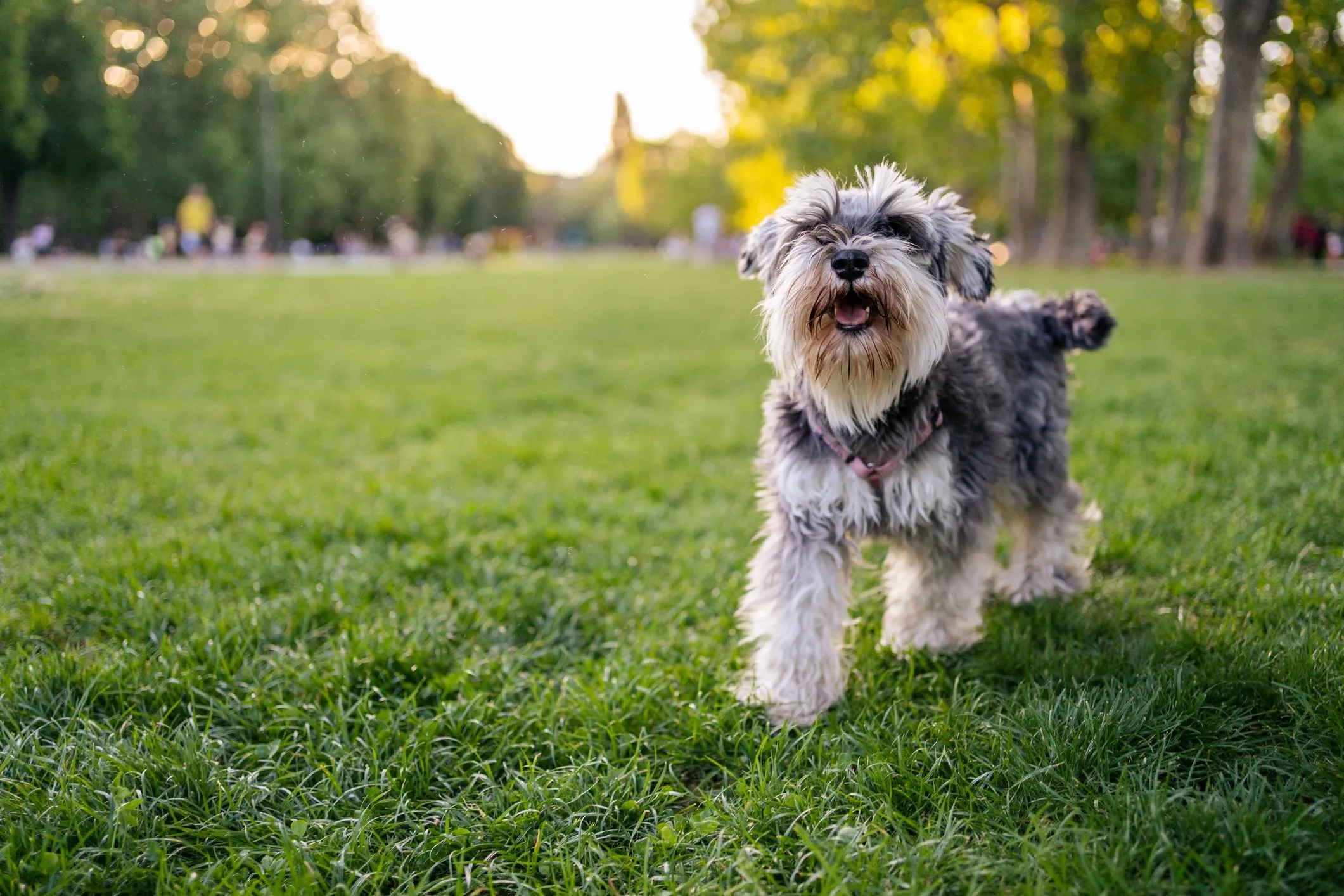 Salt and pepper Miniature Schnauzer wearing a pink harness, standing attentively in a park
Salt and pepper Miniature Schnauzer wearing a pink harness, standing attentively in a park
5. Standard Schnauzer
Larger than their Miniature counterparts, Standard Schnauzers share the same low-shedding, wiry coat. They are equally intelligent and enjoy an active lifestyle, including long walks, fetch, and problem-solving games. Like Miniature Schnauzers, their coat benefits from regular hand-stripping or professional grooming to keep it healthy and free from excessive shedding.
 Gray Standard Schnauzer standing proudly in a vibrant green field on a clear day
Gray Standard Schnauzer standing proudly in a vibrant green field on a clear day
6. Giant Schnauzer
The largest of the Schnauzer breeds, Giant Schnauzers are powerful, energetic dogs with a similarly low-shedding coat. They require significant exercise and mental engagement to prevent boredom and destructive behaviors. Daily vigorous activity like running, hiking, and extensive play sessions are crucial. Their dense, wiry coat demands consistent grooming to manage its texture and ensure minimal shedding.
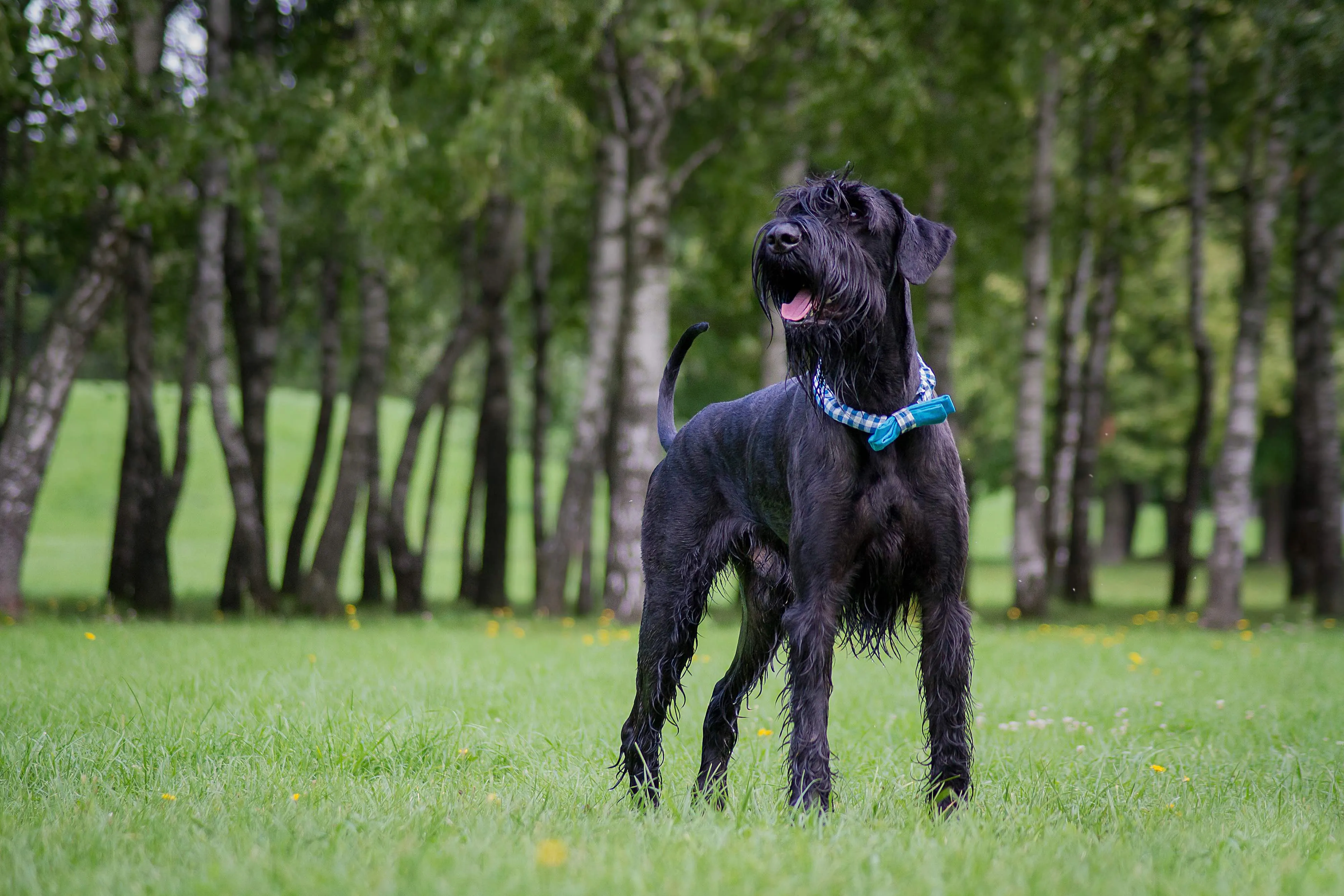 Black wet Giant Schnauzer wearing a blue bow collar, standing in a park, shaking off water
Black wet Giant Schnauzer wearing a blue bow collar, standing in a park, shaking off water
7. Bichon Frise
With their playful demeanor and fluffy, curly white coats, Bichon Frise dogs are quintessential low-shedding companions. Their soft, powder-puff coats trap loose hair and dander, making them excellent candidates for those seeking a dog breed that doesn’t shed hair. Highly intelligent and eager to please, Bichons are easily trainable. Their coat requires daily brushing to prevent matting and regular professional grooming to maintain its shape and cleanliness.
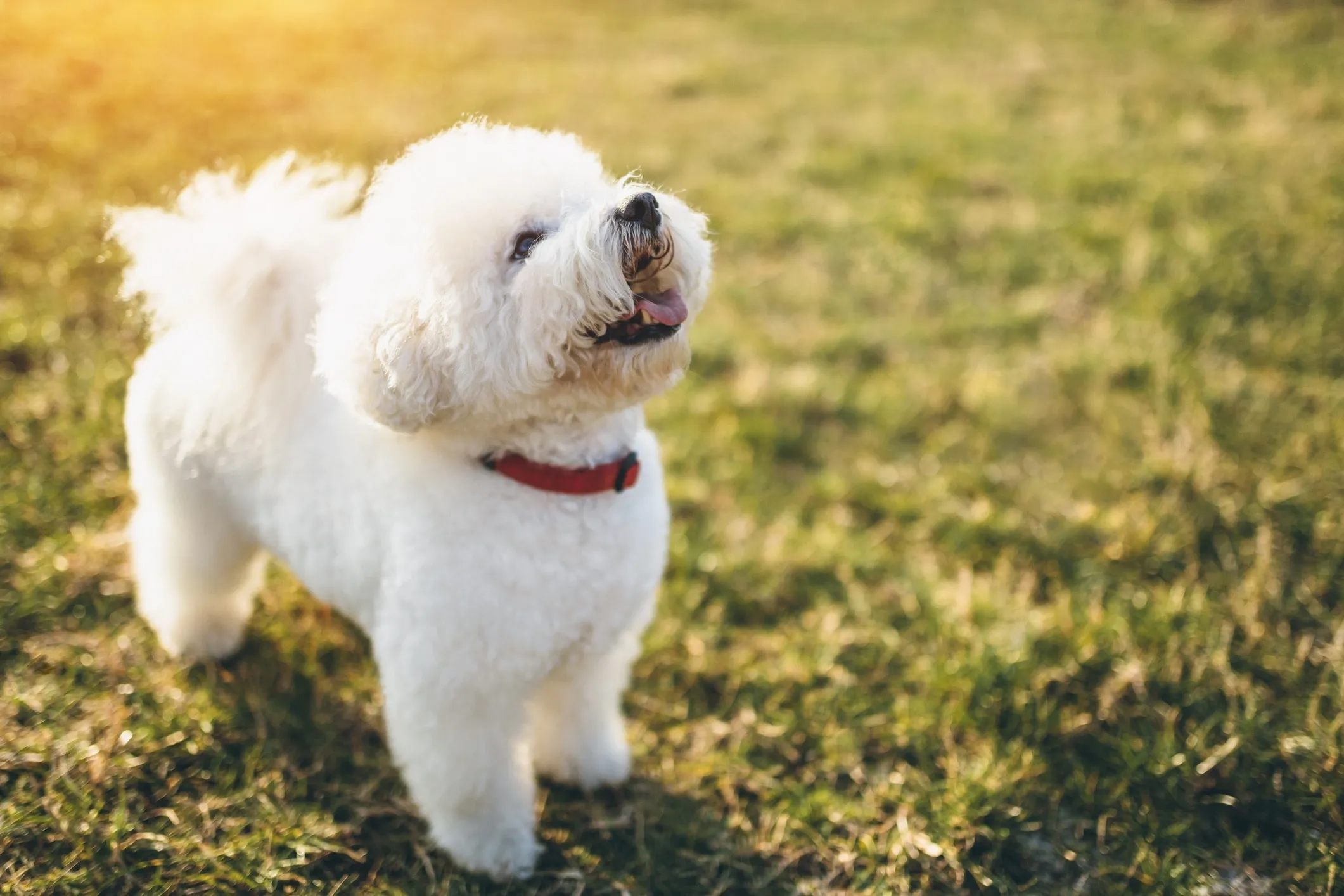 White Bichon Frise dog looking curiously upwards while sitting in green grass
White Bichon Frise dog looking curiously upwards while sitting in green grass
8. Chinese Crested
The Chinese Crested is notable for its unique appearance and two varieties: hairless and powderpuff. Both varieties are considered low-shedding. The hairless type has smooth skin with tufts of hair on its head, tail, and paws, while the powderpuff is covered in a soft, silky coat. Both are playful, affectionate, and make wonderful companions. The hairless variety requires skin care (sunscreen, moisturizing), while the powderpuff needs regular brushing to prevent tangles.
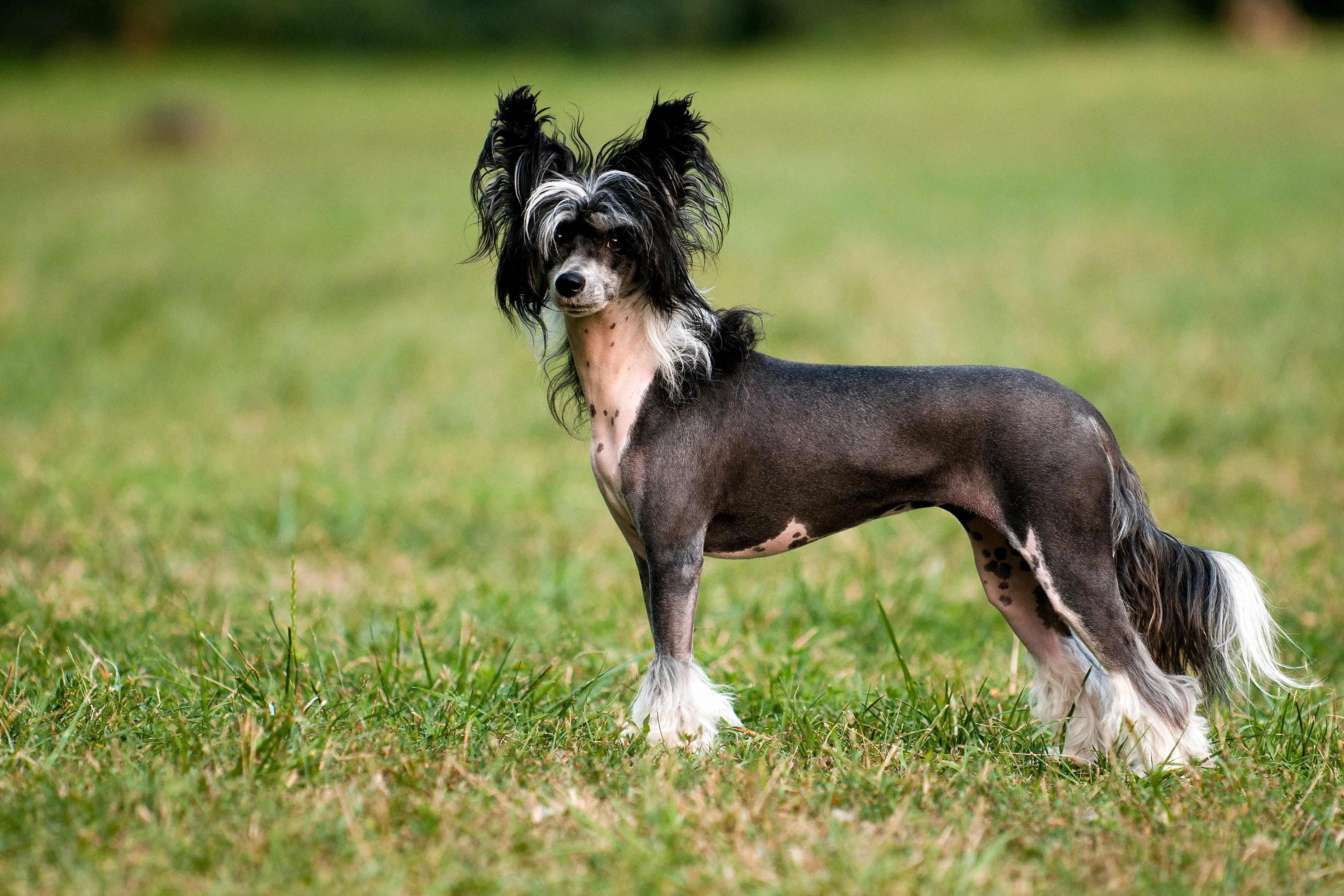 Black hairless Chinese Crested dog looking directly at the camera with a gentle expression
Black hairless Chinese Crested dog looking directly at the camera with a gentle expression
9. Portuguese Water Dog
Originally bred to assist fishermen, Portuguese Water Dogs possess a thick, curly coat that sheds minimally. This medium-sized breed is intelligent, highly trainable, and very friendly. They are also high-energy dogs that thrive on regular exercise, especially activities involving water, which they inherently love. Their curly coats require consistent brushing and professional grooming to prevent matting and maintain their health.
 Black and white Portuguese Water Dog wearing a red maple leaf bandana, standing near water
Black and white Portuguese Water Dog wearing a red maple leaf bandana, standing near water
10. Labradoodle
A popular crossbreed of a Labrador Retriever and a Poodle, Labradoodles were initially bred as hypoallergenic service dogs. They inherit the intelligence and friendly nature of both parents, making them excellent family pets. Their coat can vary from wavy to curly, and most are low-shedding. Regular brushing and professional grooming are necessary to keep their coats free from mats, particularly for those with curlier fur.
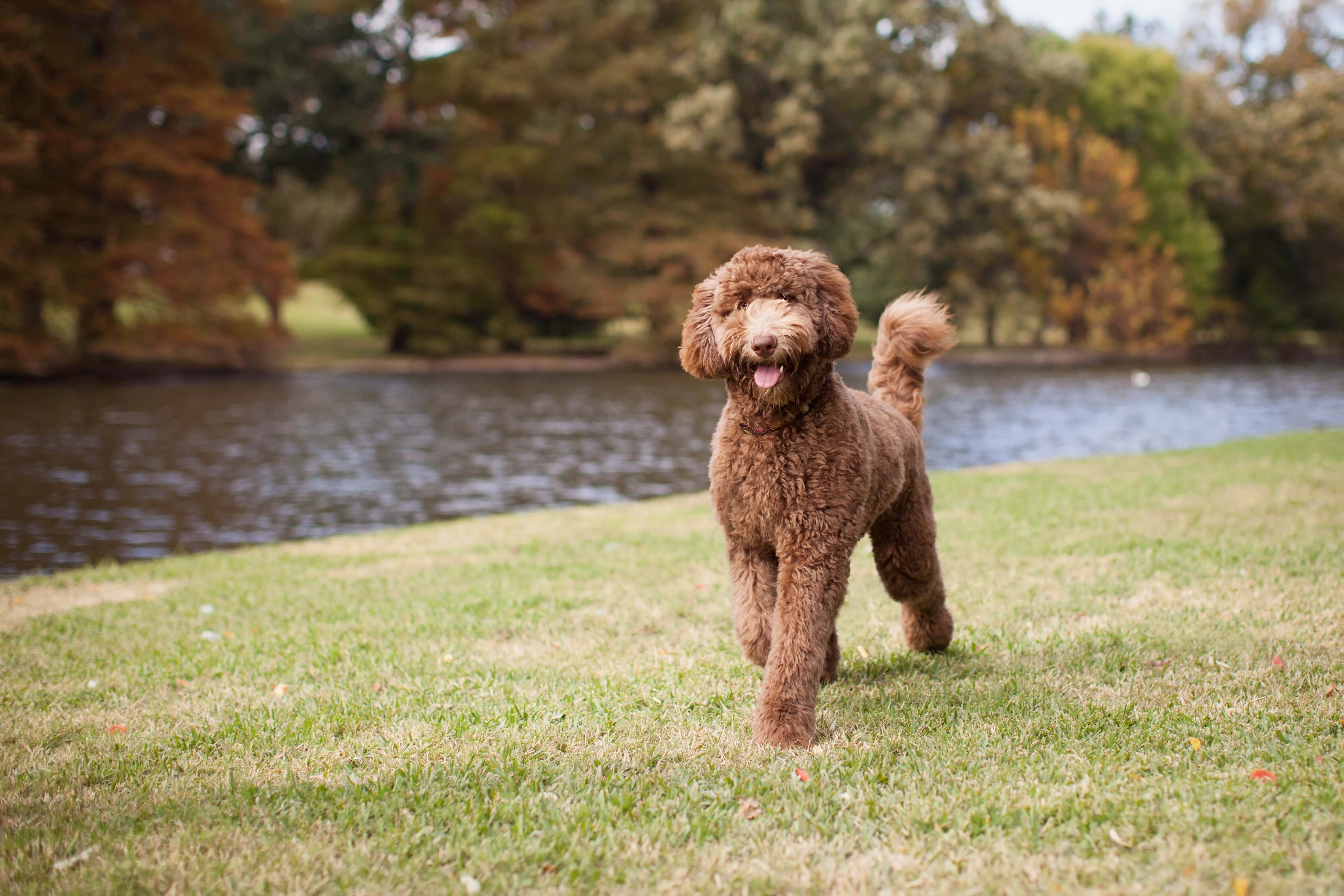 Brown Standard Labradoodle walking gracefully through a park with green trees in the background
Brown Standard Labradoodle walking gracefully through a park with green trees in the background
11. Goldendoodle
Another popular “doodle” breed, Goldendoodles are a mix of a Golden Retriever and a Poodle. Like Labradoodles, they are known for their minimal shedding, friendly disposition, and high intelligence. Their coats come in various colors and textures, requiring frequent grooming with a slicker brush to prevent matting. They are a wonderful dog breed that doesn’t shed hair for active families.
 Goldendoodle lying comfortably on a couch with a person sitting in the background, out of focus
Goldendoodle lying comfortably on a couch with a person sitting in the background, out of focus
12. Lagotto Romagnolo
Hailing from Italy, Lagotto Romagnolo dogs were originally water retrievers. Their curly, woolly coat is naturally water-resistant and sheds very little, making them a great choice for those prone to allergies. They are generally good with children and other pets, fitting well into family life. Their unique coat requires consistent grooming to prevent matting and maintain its texture.
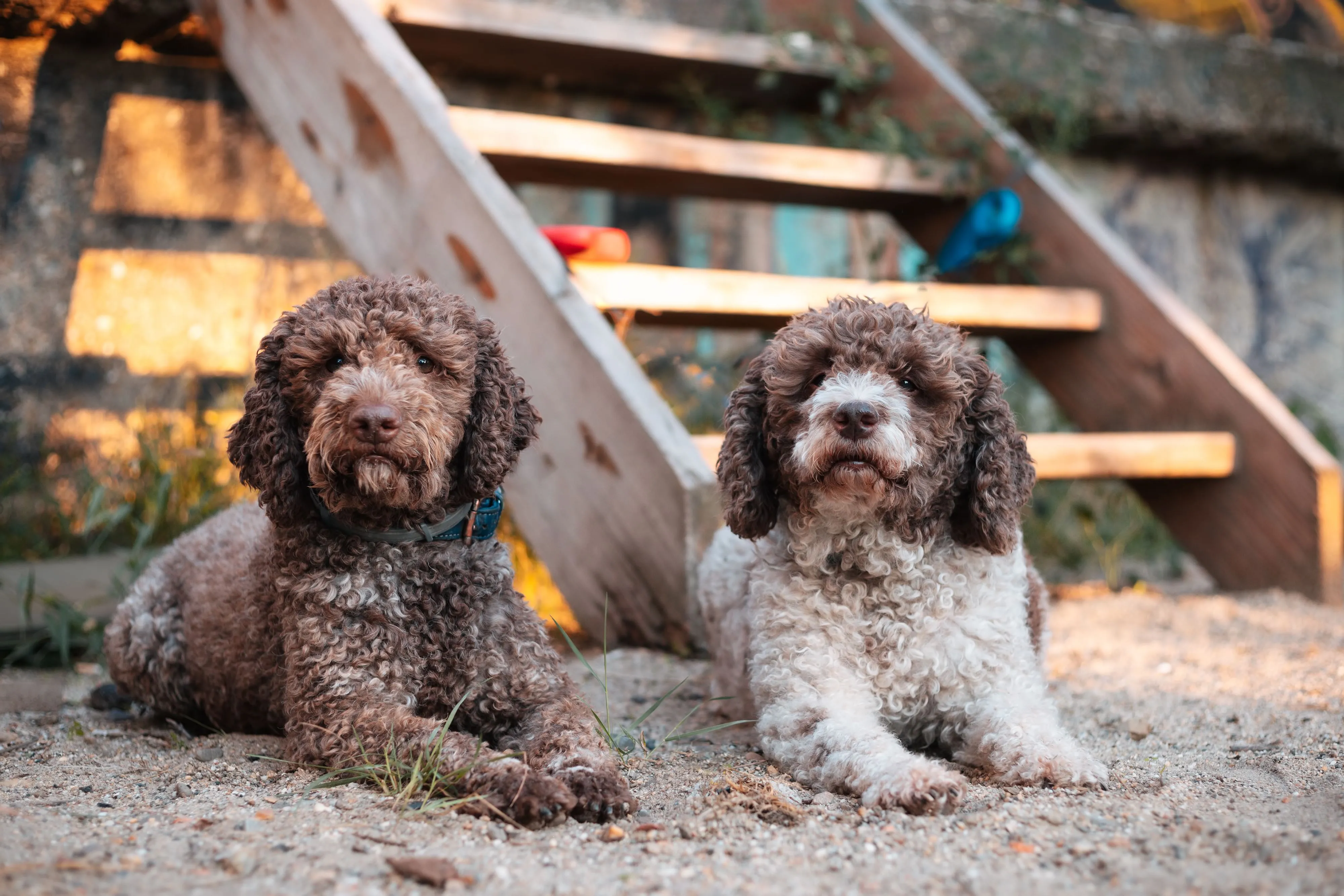 Two Lagotto Romagnolo dogs lying in dirt, staring intently at the camera with curious expressions
Two Lagotto Romagnolo dogs lying in dirt, staring intently at the camera with curious expressions
13. Affenpinscher
Affenpinschers are small dogs with a distinctive monkey-like appearance. Their dense, wiry coat is low-shedding but demands dedicated care. This includes regular at-home brushing and professional stripping, a process that removes old hair by the root rather than simply trimming it. This unique grooming method contributes to their minimal shedding.
 Close-up of a black Affenpinscher dog's face, showcasing its wire-haired coat and expressive eyes
Close-up of a black Affenpinscher dog's face, showcasing its wire-haired coat and expressive eyes
14. Irish Water Spaniel
Friendly, intelligent, and highly trainable, Irish Water Spaniels are another water-loving breed with a thick, curly coat that sheds minimally. Their liver-colored fur requires regular grooming to prevent tangles and keep it healthy. These energetic dogs need plenty of exercise to stay happy and well-behaved.
 Profile view of a brown Irish Water Spaniel with its characteristic curly coat, standing outdoors
Profile view of a brown Irish Water Spaniel with its characteristic curly coat, standing outdoors
15. Aussiedoodle
An Aussiedoodle is a cross between an Australian Shepherd and a Poodle, inheriting intelligence and high energy from both parents. These low-shedding dogs are very smart and need substantial exercise and mental stimulation to prevent boredom and potential destructiveness. Their wavy or curly coats require regular brushing to maintain their condition and minimize shedding.
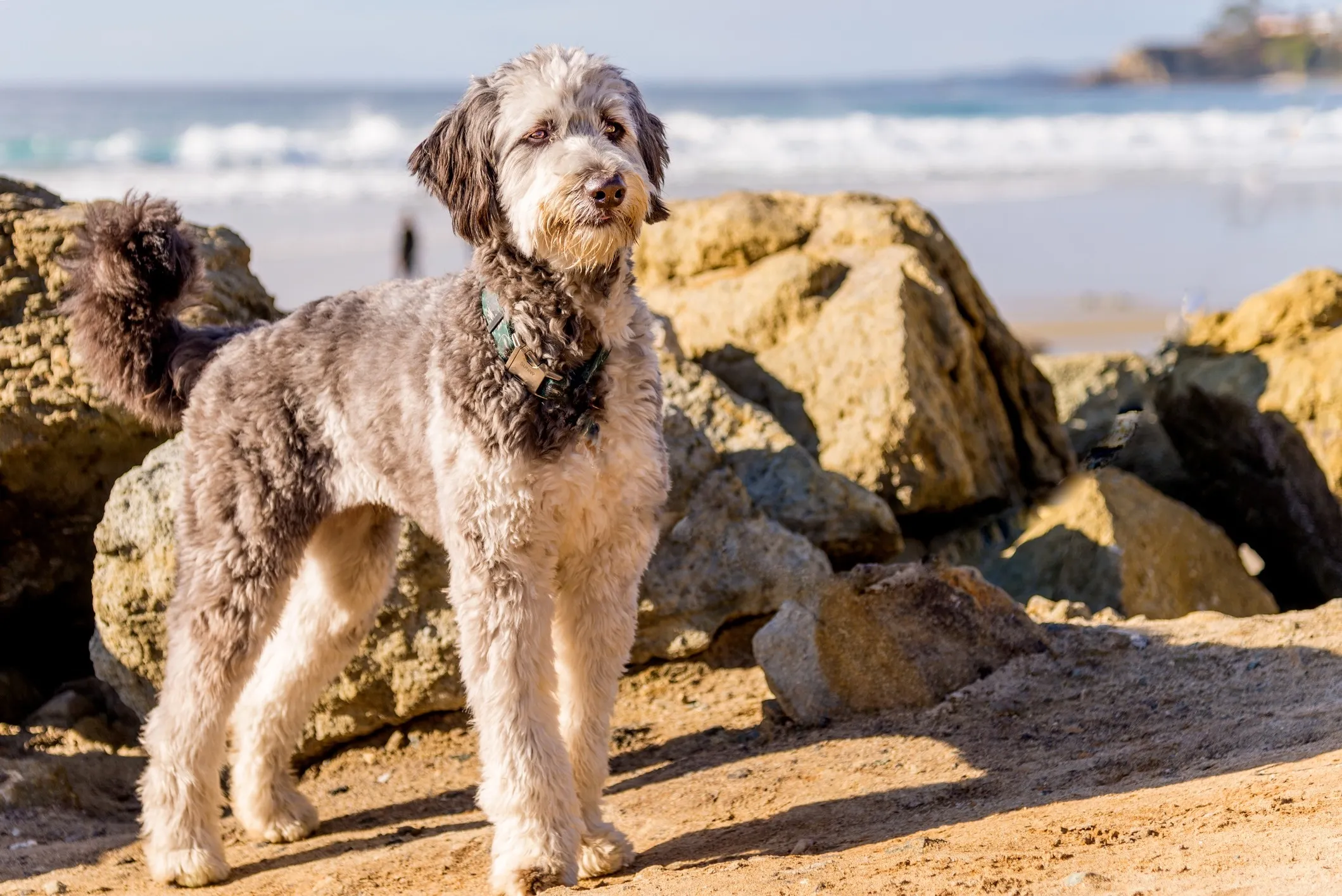 Standard Aussiedoodle dog standing on a sandy beach, looking out at the water
Standard Aussiedoodle dog standing on a sandy beach, looking out at the water
16. Bolognese
These cute, easygoing dogs from Italy boast a long, fluffy white coat that, despite its somewhat messy appearance, is low-shedding. Bolognese are known for getting along well with children and other pets, adapting to various living situations. Their distinctive coat needs significant grooming to prevent matting and maintain its pristine look.
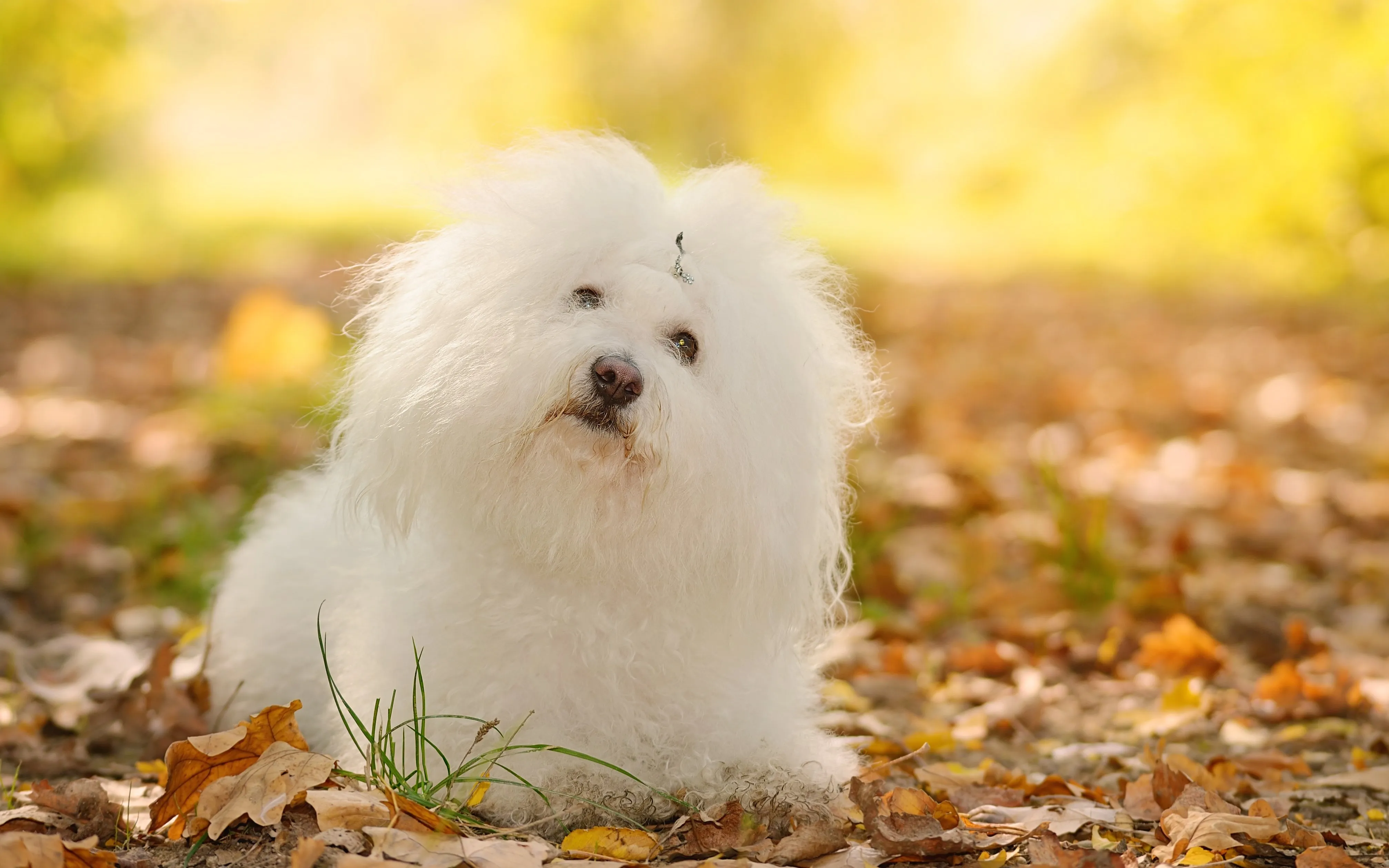 White Bolognese dog sitting gracefully in an autumn forest, surrounded by colorful foliage
White Bolognese dog sitting gracefully in an autumn forest, surrounded by colorful foliage
17. Maltese
The Maltese is a small dog breed famous for its luxurious, long white coat that sheds very little. They are affectionate and playful companions, ideal for pet parents who can commit to their extensive grooming needs. Daily brushing is crucial to prevent mats, especially if the coat is kept long. Many owners opt for a shorter “puppy cut” to simplify maintenance.
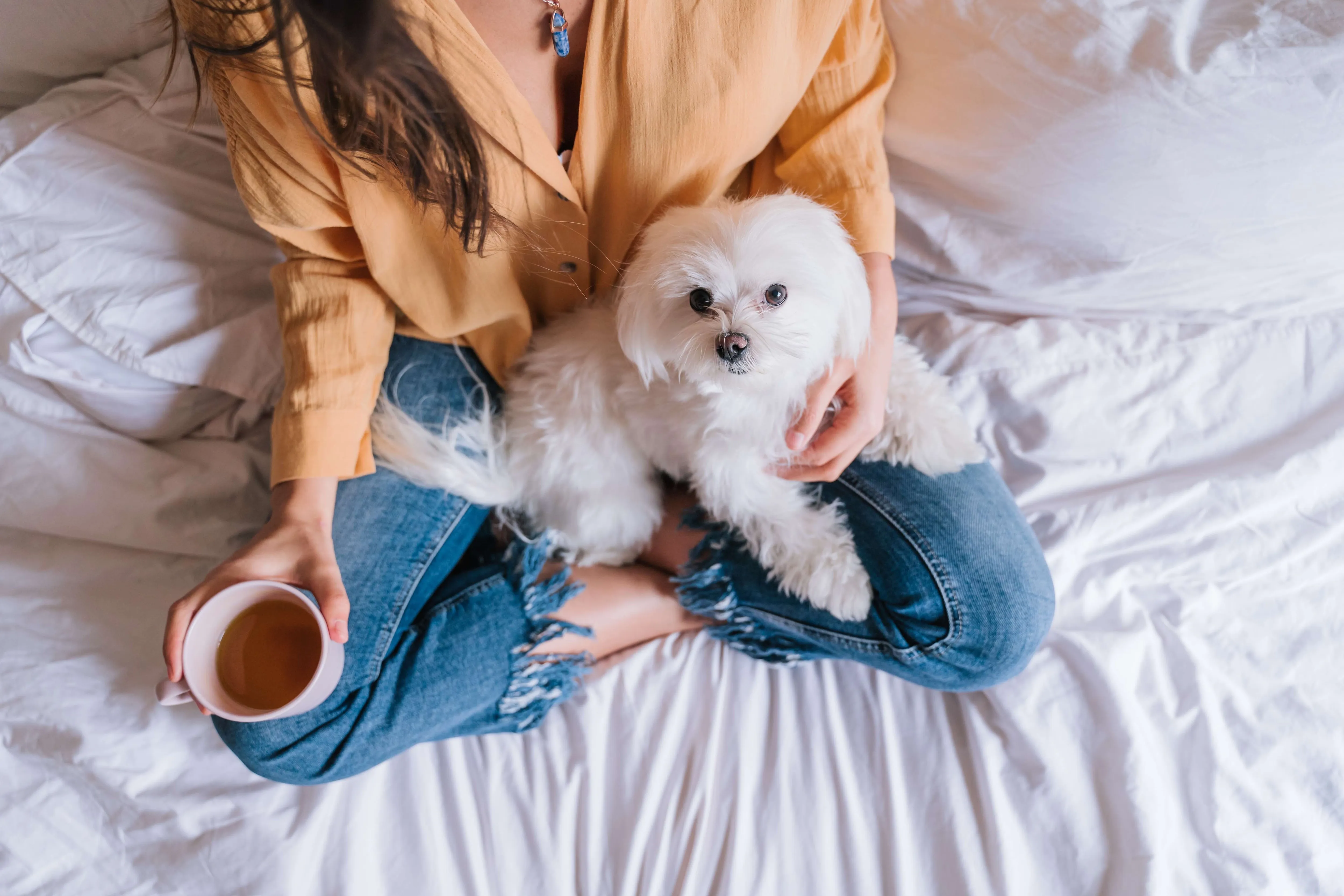 Woman gently holding a white Maltese dog on a bed, looking affectionately at the camera
Woman gently holding a white Maltese dog on a bed, looking affectionately at the camera
18. Soft Coated Wheaten Terrier
As their name suggests, Soft Coated Wheaten Terriers have an incredibly soft, silky coat that is low-shedding. This medium-sized Irish breed retains a high energy level throughout its life, demanding ample exercise and mental stimulation. Their unique coat requires consistent brushing to prevent tangles and mats.
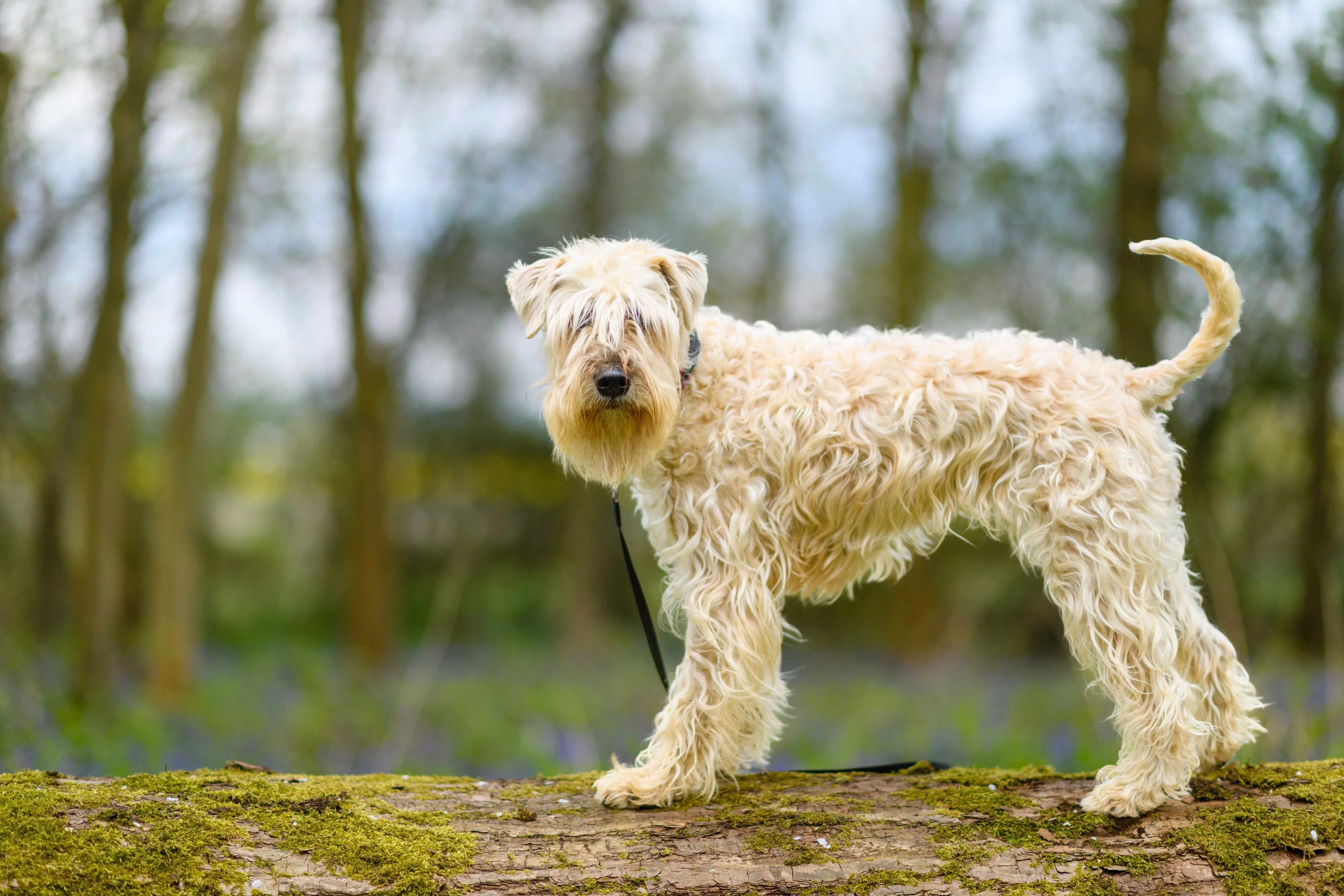 Soft Coated Wheaten Terrier dog sitting on a log in a natural outdoor setting
Soft Coated Wheaten Terrier dog sitting on a log in a natural outdoor setting
19. Coton de Tulear
Originating from Madagascar, Cotons de Tulear are small, easygoing dogs with a soft, cotton-like coat that sheds minimally. Their good nature makes them excellent family pets, getting along well with other pets and children when properly introduced. Their beautiful coats require regular brushing to prevent tangles.
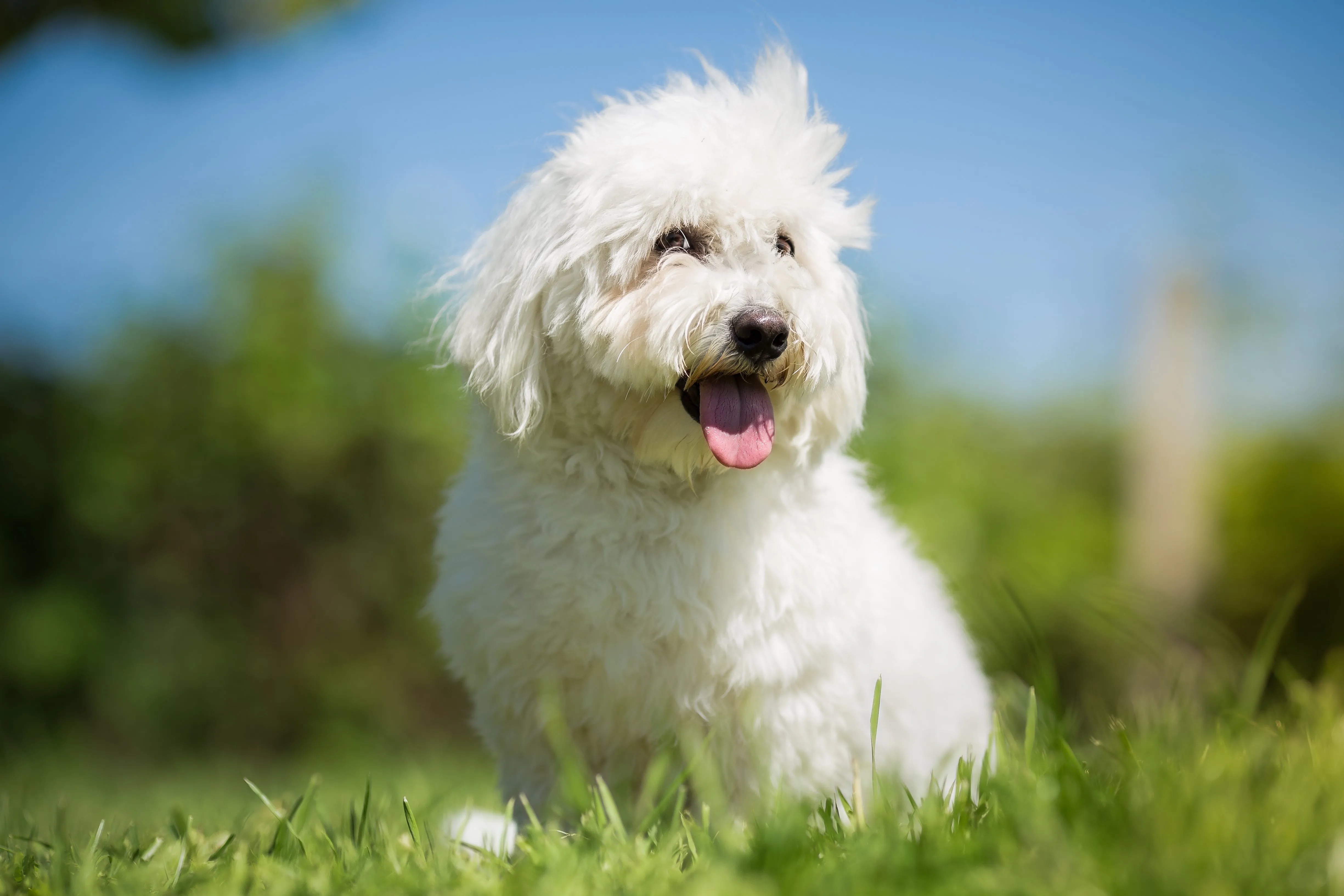 White Coton de Tulear sitting peacefully in green grass, its hair gently blowing in the wind
White Coton de Tulear sitting peacefully in green grass, its hair gently blowing in the wind
20. Schnoodle
The Schnoodle is a hybrid of two low-shedding breeds: the Schnauzer and the Poodle. Their coat can be curly or wavy, depending on which parent’s genes they inherit, but it’s always low-shedding. These intelligent and playful dogs are well-suited for families and adapt well to various living situations. Regular brushing is essential to keep their coats in good condition.
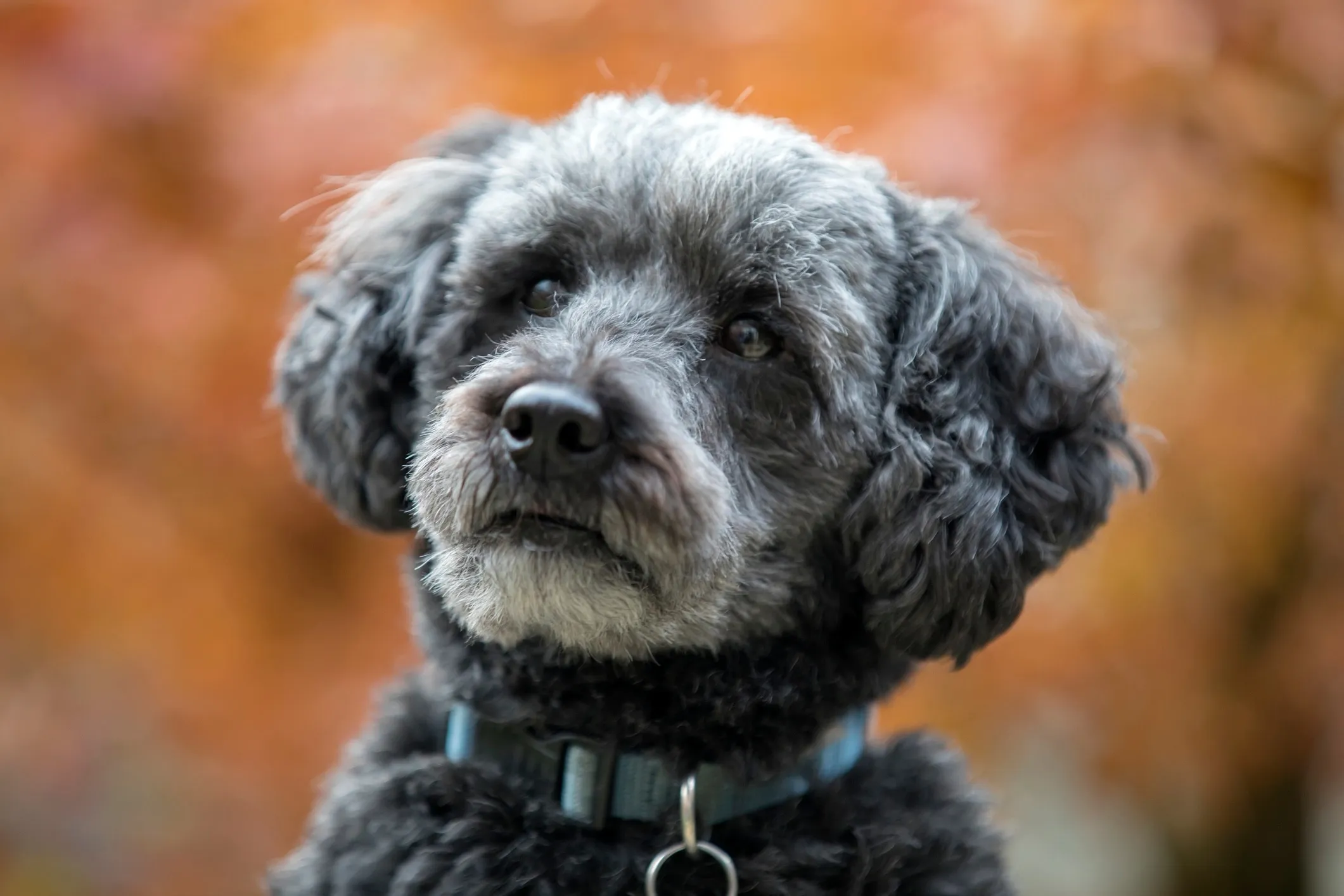 Close-up of a gray Schnoodle dog's face, showing its wavy, low-shedding coat
Close-up of a gray Schnoodle dog's face, showing its wavy, low-shedding coat
21. Bedlington Terrier
Often described as “a lamb in dog’s clothing,” the Bedlington Terrier is a small, curly-haired breed known for its distinctive topknot and pom-pom ear tufts. They are deeply devoted to their families and can develop separation anxiety if left alone for extended periods. Their unique coat requires specific grooming to maintain its characteristic appearance and low-shedding quality.
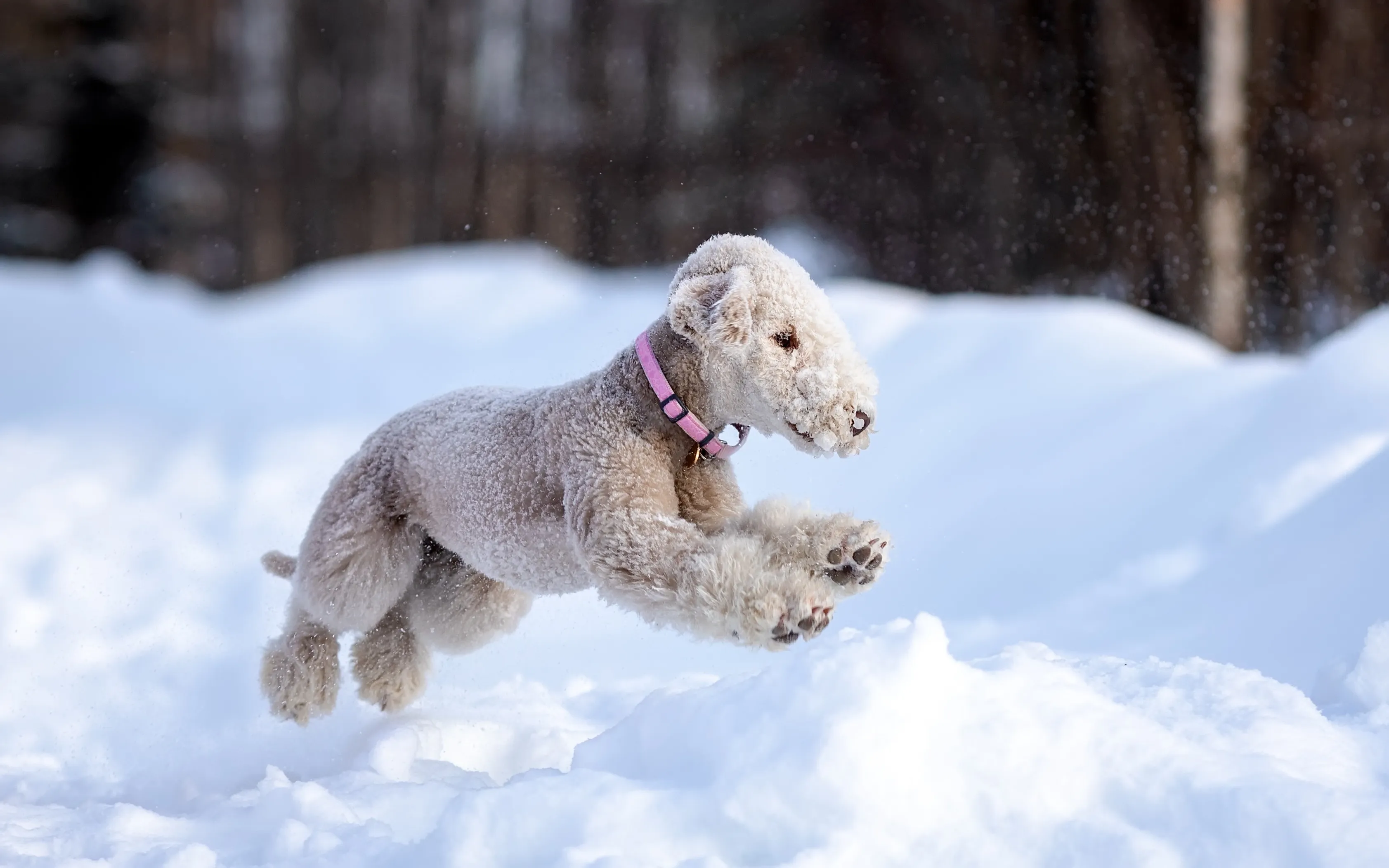 White Bedlington Terrier running energetically through fresh snow in a winter landscape
White Bedlington Terrier running energetically through fresh snow in a winter landscape
22. Xoloitzcuintli
Also known as Mexican Hairless Dogs, Xoloitzcuintli are one of the oldest and rarest dog breeds. They come in three sizes (toy, miniature, and standard) and can be either hairless or covered in a short, fine coat. Both varieties are considered low-shedding. The hairless type requires careful skin care, while the coated variety needs minimal brushing.
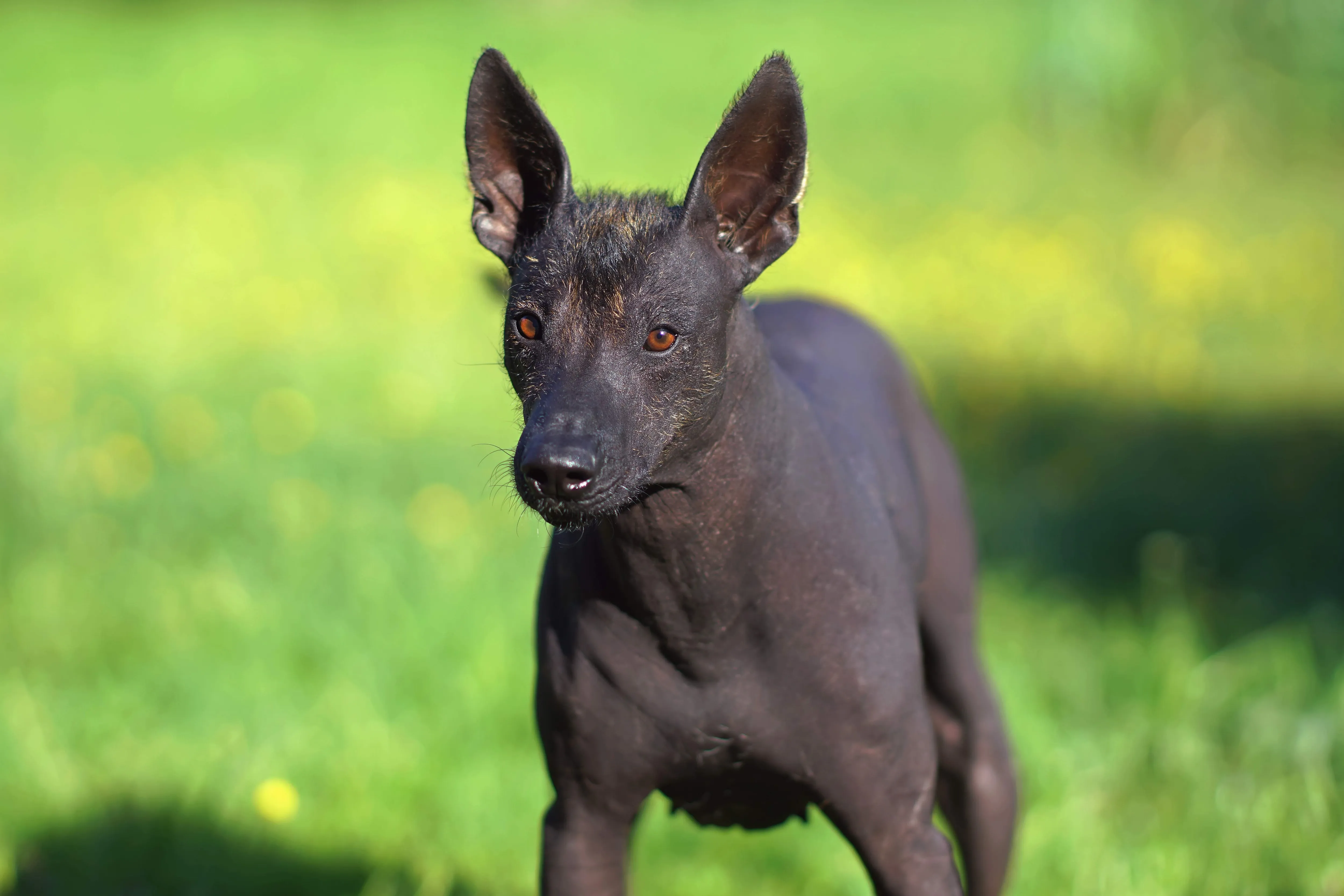 Black Mexican Hairless dog (Xoloitzcuintli) standing gracefully in green grass
Black Mexican Hairless dog (Xoloitzcuintli) standing gracefully in green grass
23. Whoodle
A cross between a Soft-Coated Wheaten Terrier and a Poodle, Whoodles are friendly dogs that shed very little. They inherit intelligence and an affectionate nature from both parent breeds, making them wonderful family companions. Their soft, wavy to curly coats require regular brushing to prevent matting.
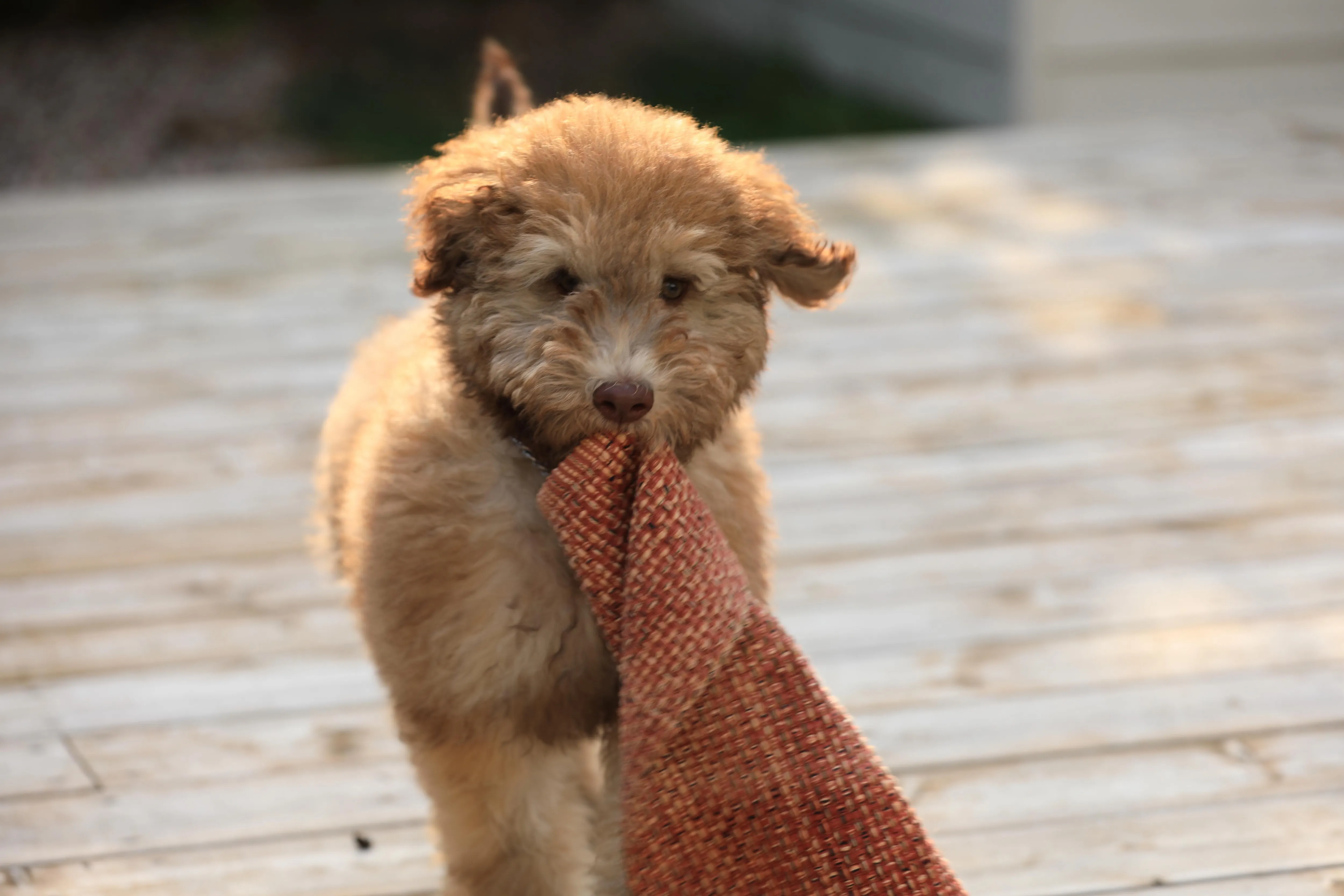 Tan Whoodle puppy dragging a washcloth playfully on a wooden floor
Tan Whoodle puppy dragging a washcloth playfully on a wooden floor
24. Bernedoodle
Bernedoodles are a crossbreed of Bernese Mountain Dogs and Poodles. These large, low-shedding dogs are known for their friendly, affectionate nature and gentle demeanor, making them popular with families, especially those with children and other pets. They require plenty of exercise to maintain their active lifestyle. Their coats vary and need regular brushing to keep them tangle-free.
 Large Bernedoodle dog lying contentedly in green grass with its tongue playfully out
Large Bernedoodle dog lying contentedly in green grass with its tongue playfully out
25. Shorkie
The Shorkie is a mixed breed resulting from a cross between two low-shedding dogs: the Shih Tzu and the Yorkshire Terrier. They combine the best qualities of both breeds—small size, playfulness, and friendliness. Like most dogs on this list, their silky or wavy coats require a consistent grooming routine to prevent mats and maintain their healthy appearance.
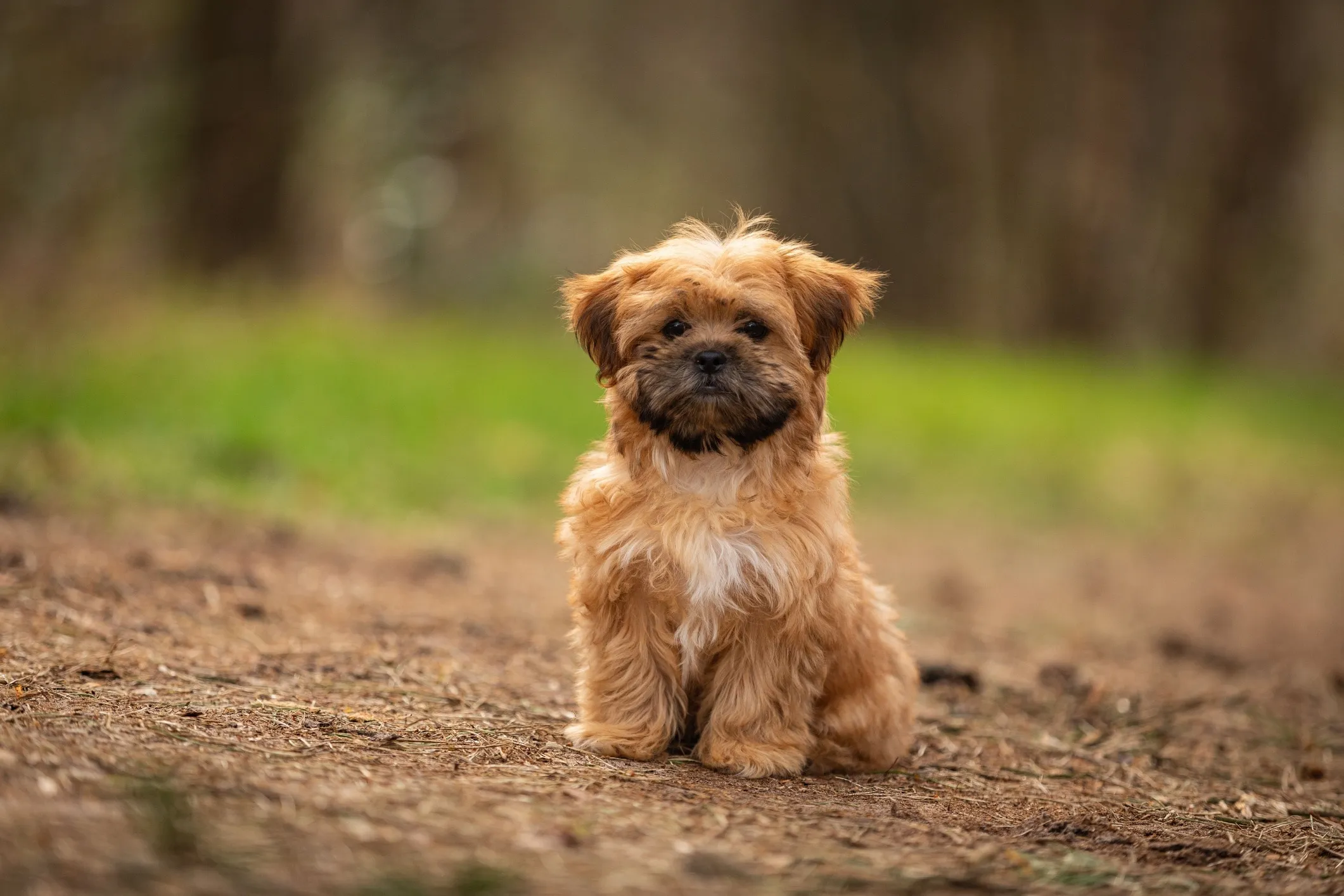 Tan and black Shih Tzu and Yorkie mix (Shorkie) sitting on a hiking trail in a natural setting
Tan and black Shih Tzu and Yorkie mix (Shorkie) sitting on a hiking trail in a natural setting
26. Afghan Hound
Afghan Hounds are striking dogs known for their long, flowing coats and slender builds. While their coats are abundant, they shed minimally. These elegant dogs are built for speed and possess a loving nature towards their families, though they can be reserved with strangers. Early and consistent socialization is crucial for this breed. Their extensive coat requires significant grooming, including daily brushing, to prevent mats and tangles.
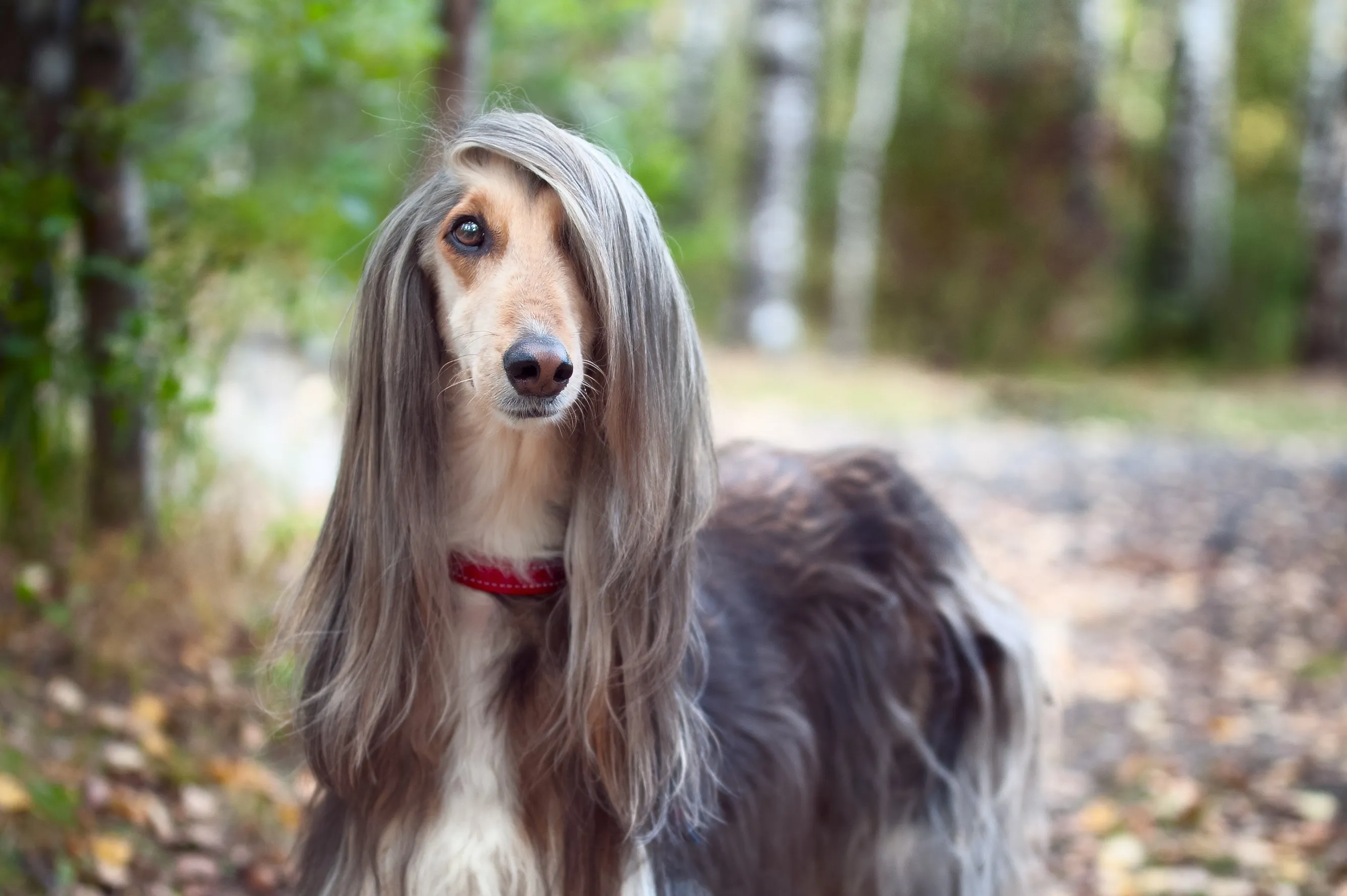 Gray and tan Afghan Hound with its distinctive long, flowing coat, looking attentively at the camera
Gray and tan Afghan Hound with its distinctive long, flowing coat, looking attentively at the camera
27. Barbet
The Barbet, pronounced “bar-bay,” is a cheerful dog with a shaggy, woolly coat that sheds very little. The name, derived from the French word “barbe” (beard), hints at their hairy chin. These big, low-shedding dogs love to swim, thanks to their protective curly coats. Regular brushing with a slicker or pin brush, two to three times a week, is essential to keep their coat in good condition, especially after water activities.
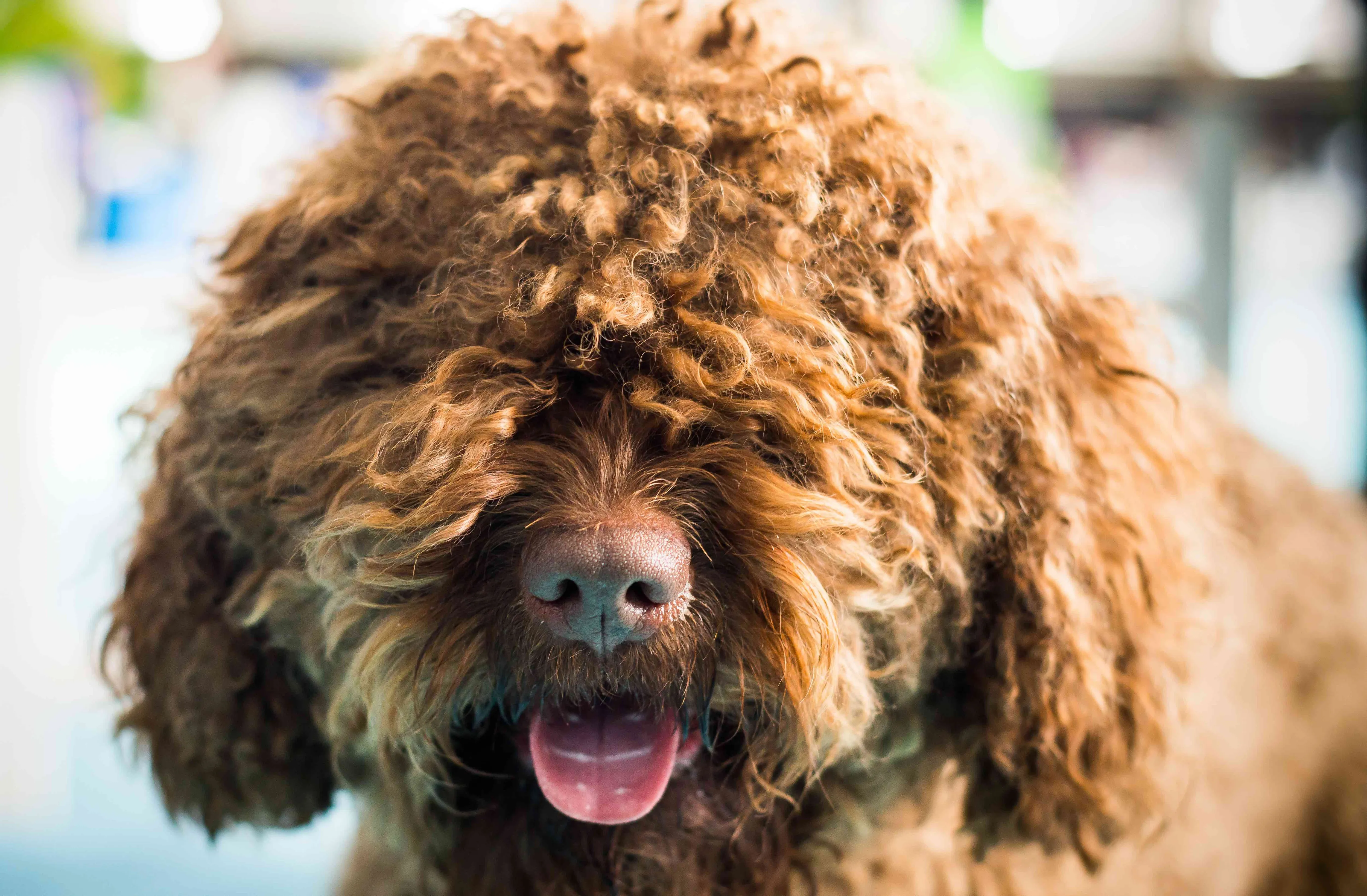 Close-up of a curly red Barbet dog's face, showcasing its characteristic shaggy coat and beard
Close-up of a curly red Barbet dog's face, showcasing its characteristic shaggy coat and beard
28. Shih-Poo
A mixed breed combining a Shih Tzu and a Poodle (most commonly a Toy Poodle), the Shih-Poo is a small, adaptable dog that can thrive in almost any living situation. They typically have a low-shedding coat that can be wavy or curly. Shih-Poos need about 30 minutes of daily exercise and a good brushing session to keep their coats healthy and tangle-free.
 Tan and black Shih-Poo dog close-up, highlighting its soft, wavy coat and expressive eyes
Tan and black Shih-Poo dog close-up, highlighting its soft, wavy coat and expressive eyes
29. Peruvian Inca Orchid
Peruvian Inca Orchids are a rare and ancient dog breed from Peru, known for their nearly hairless bodies, which makes them inherently low-shedding. They come in small, medium, and large sizes. While rare, their unique quality makes them a perfect choice for those seeking a dog breed that doesn’t shed hair at all. The hairless variety requires skin protection from sun and cold.
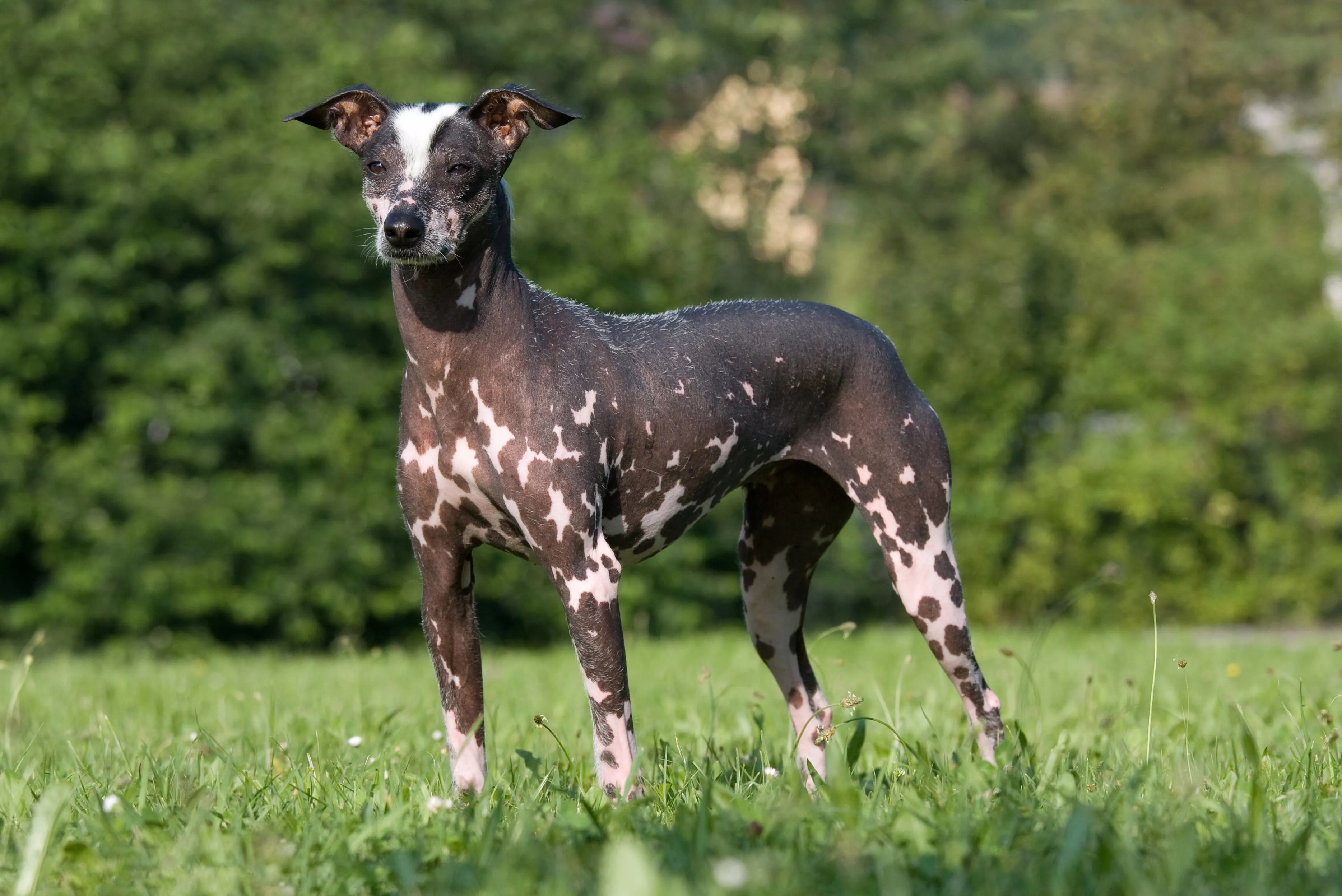 Peruvian Inca Orchid dog, with its mostly hairless body, standing on dry ground
Peruvian Inca Orchid dog, with its mostly hairless body, standing on dry ground
30. Malshi
The Malshi is a happy, small, low-shedding dog, a cross between the Maltese and Shih Tzu. They thrive on close companionship and need to be near their favorite humans to be truly content. Their soft, flowing coats require regular grooming to prevent matting and maintain their beauty.
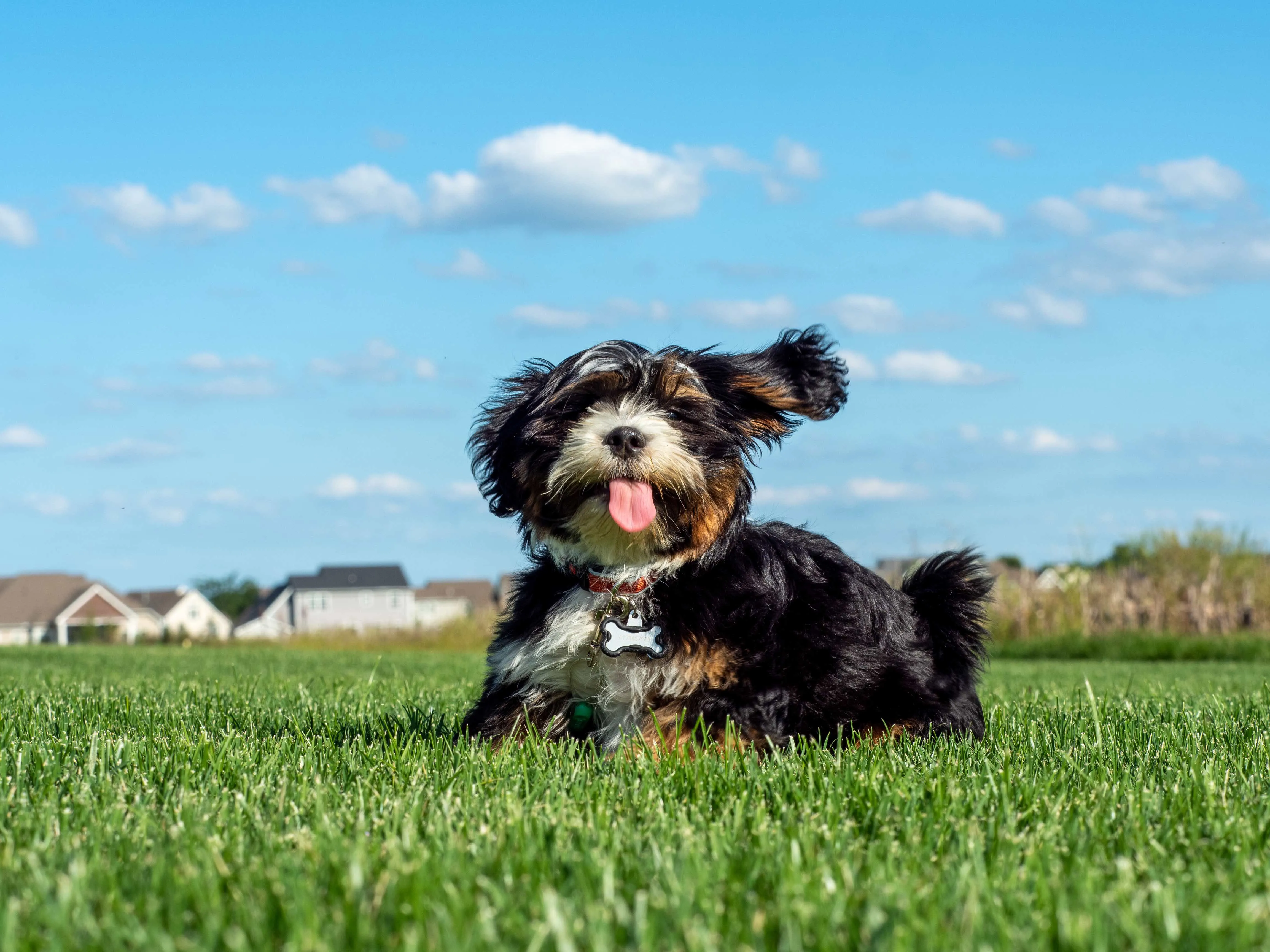 Tricolor Malshi dog sitting contentedly in lush green grass
Tricolor Malshi dog sitting contentedly in lush green grass
Essential Tips for Living with a Dog Breed That Doesn’t Shed Hair
While choosing a dog breed that doesn’t shed hair can significantly reduce allergens and mess, responsible pet ownership still involves consistent care, especially if allergies are a concern.
Keep Up With Grooming
Even low-shedding dogs require diligent grooming to maintain their coat health and minimize dander. Regular brushing, often daily for longer or curly coats, prevents tangles and mats and helps remove any loose dander before it disperses. Professional grooming every 4-8 weeks is often essential for many of these breeds, involving clipping, bathing, and detangling. Investing in quality grooming tools and learning basic at-home techniques can be very beneficial. For those with severe allergies, using specialized dander-reducing shampoos or wipes during baths (typically every 4-6 weeks) can further help manage allergens.
Maintain a Clean Home Environment
Minimizing allergens in your home goes beyond just grooming your dog. Regular cleaning is crucial. Vacuum frequently with a HEPA-filter vacuum cleaner, dust surfaces often, and wash bedding (both yours and your dog’s) weekly in hot water. Consider using air purifiers with HEPA filters in living areas and bedrooms to capture airborne allergens. Keeping your dog off furniture, especially beds, can also help reduce allergen buildup in common resting spots. Good ventilation, like opening windows when possible, can also help circulate air and reduce allergen concentration.
Talk to Your Healthcare Provider and Veterinarian
Managing allergies while living with a dog is a proactive effort. Consult with your healthcare provider or an allergist to discuss treatment options, which may include medications, nasal sprays, or allergy shots. They can provide personalized advice based on your specific sensitivities. Additionally, regular veterinary check-ups for your low-shedding dog are important. A healthy dog generally has healthier skin and coat, producing fewer irritants. Your veterinarian can offer advice on diet, supplements, and skin care routines to promote optimal coat health and further minimize allergen production.
Bringing a dog breed that doesn’t shed hair into your life can be a fantastic way to enjoy the companionship of a canine without the constant battle against shedding or severe allergic reactions. By understanding the true nature of “hypoallergenic” and committing to consistent grooming and home cleanliness, you can create a harmonious and comfortable environment for both you and your beloved pet. This allows individuals with sensitivities to experience the profound joy and unique bond that only dog ownership can provide.
